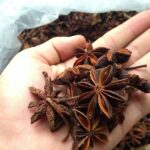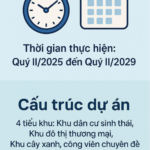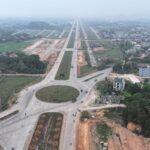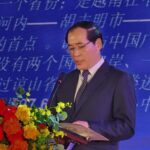On May 27, 2025, in Lang Son City, the Lang Son Investment, Trade and Tourism Promotion Center held a conference on “Building eco-tourism products in Loc Binh district” to gather feedback from travel businesses and researchers to further promote tourism activities in the district.
A NATURAL “TREASURE” AWAITS AWAKENING
Opening the conference, Mr. Hoang Xuan Thuan, Director of Lang Son Investment, Trade and Tourism Promotion Center, said that Loc Binh is a mountainous border district; to the north it borders Ninh Minh County, Guangxi Zhuang Autonomous Region, China, with a border length of 28.89km.
Loc Binh possesses favorable conditions for tourism development with its pristine natural landscape, rich ethnic cultural identity, and strategic geographical location. With an area of over 1,000 km2, Loc Binh has a diverse terrain consisting of mountains, valleys, rivers, and highlands, creating a majestic landscape and a cool climate all year round – ideal conditions for developing eco-tourism and resorts.
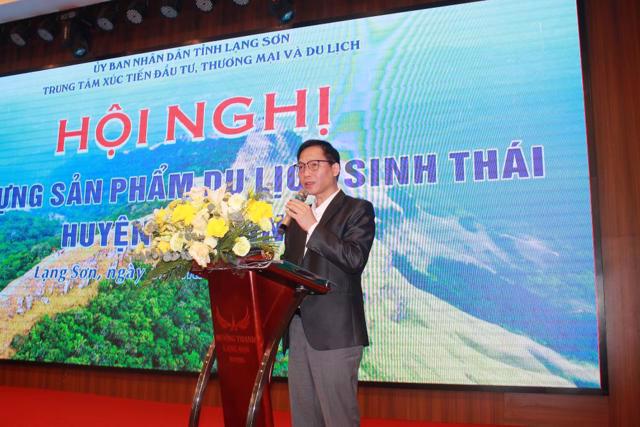
One of the prominent destinations is the Mau Son eco-tourism area – considered the “Second Sa Pa” of the Northeast region. With an altitude of more than 1,500 meters above sea level, Mau Son has a cool climate in the summer and can have snow in the winter – a rare phenomenon in Vietnam, attracting tens of thousands of tourists each year.
“In 2024, Loc Binh district welcomed 285,000 tourist arrivals, with a revenue of VND 162.45 billion. Tourists to Loc Binh district mainly attend festivals and visit tourist attractions such as the Mau Son Tourist Center, the Ancient Spiritual Site, the Phat Chi Landmark in Mau Son commune; eco-tourism at the Ban Khiếng Waterfall in Huu Khanh commune; and scenic spots such as lakes, dams, streams, and waterfalls…”
Ms. Hoang Thi Thuy, Vice Chairman of Loc Binh District People’s Committee, Lang Son Province.
In terms of culture, Loc Binh is home to 10 ethnic groups, mainly Tay, Nung, and Dao. Traditional festivals such as the Gong Festival, the Cau Mua Festival, the Tet Nhay of the Dao people, and the Then, Sli, and Luan tunes are invaluable intangible cultural heritages that can be exploited to develop community and cultural tourism.
Ms. Hoang Thi Thuy, Vice Chairman of Loc Binh District People’s Committee, stated that despite its natural advantages and valuable tourism resources, tourism in the area is still in its early stages of development. Tourism products are not diverse, service quality is limited, infrastructure is inadequate, and promotion efforts have been ineffective.
“The number of tourists to Loc Binh in recent years has been on the rise, especially domestic and neighboring province visitors. However, they tend to stay for a short period, mainly for sightseeing, and there are not many services to keep them longer. The district currently has only a few small-scale accommodations and lacks hotels and resorts that meet higher standards for longer stays,” said Thuy.
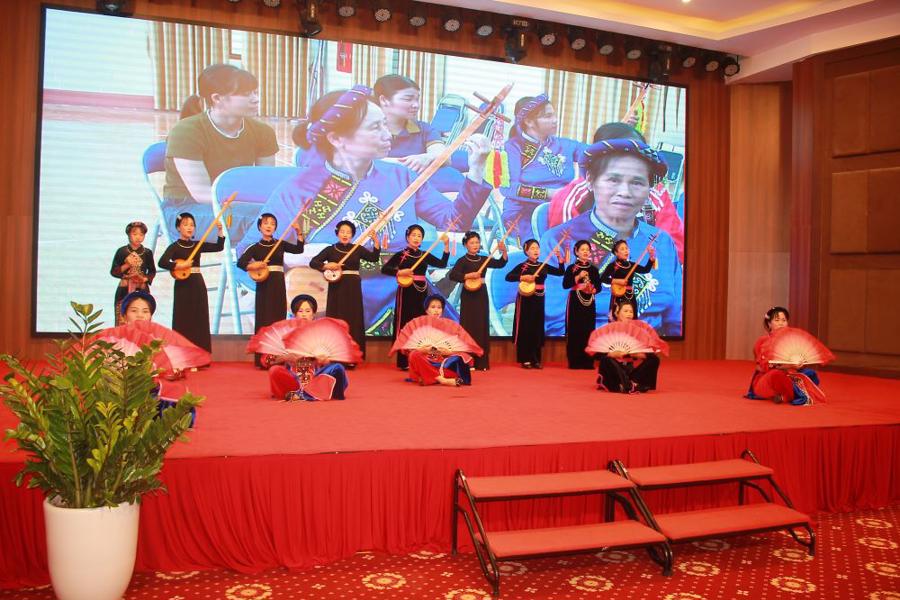
According to Thuy, in Mau Son – the brightest spot of Loc Binh tourism, tourism activities are still spontaneous and lack coordination and large-scale investment. While the transportation system to the Mau Son peak has improved, it still poses safety risks during the rainy season or when there is frost. Cultural preservation in conjunction with tourism development has also not received adequate attention. Tour routes and products are not well-organized, lacking connections between destinations and between businesses and the community.
CREATING CONDITIONS FOR BUSINESSES TO INVEST IN TOURISM, GIVING PRIORITY TO GREEN AND SUSTAINABLE PROJECTS
The leadership of Loc Binh District People’s Committee shared that in line with the Development Orientation towards 2030, with a vision towards 2045, Loc Binh is focusing on developing a Master Plan for Tourism Development in the district, clearly dividing it into regions: the eco-tourism and resort region centered on Mau Son and its vicinity; the cultural tourism region in communes with a large population of ethnic minorities such as Tam Gia, Tu Mich, and Huu Khanh; and the border tourism region at the Chi Ma border gate.
The district has been paying attention to developing connecting transport infrastructure, such as expanding and upgrading roads to the Mau Son tourist area and the Chi Ma border gate – Mau Son – Lang Son route. At the same time, it is stepping up investment promotion from large enterprises inside and outside the province, creating favorable mechanisms for the formation of resorts, eco-tourism areas, and hotels with a standard of 3 stars or higher. Priority is given to green, sustainable, and environmentally friendly projects.
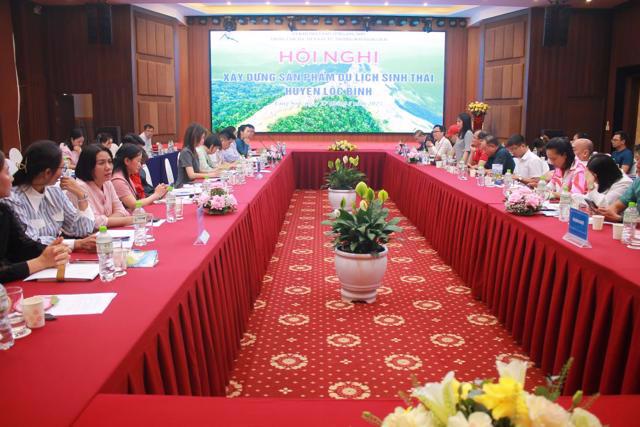
“Loc Binh will strengthen its own tourism brand, associated with the image of Mau Son – the season of snowfall and the identity of highland ethnic groups. We will coordinate with travel companies to form linked tours such as Lang Son – Mau Son – Chi Ma – Cao Bang or Hanoi – Loc Binh – Northeast,” said Thuy.
At the conference, travel businesses and researchers from Hanoi contributed ideas and recommendations to the leaders of Loc Binh district to further promote tourism activities. A representative of a travel company shared that when bringing Vietnamese tourists to China, they wanted to let the tourists stay in Lang Son before returning to Hanoi, but there is a lack of accommodation and entertainment activities in Lang Son province and Loc Binh district, so tourists are not inclined to stay overnight.
Associate Professor Dr. Pham Hong Long, Head of Tourism Department, University of Social Sciences and Humanities, said that since the French came to Vietnam 1.5 centuries ago, they have established resorts in mountainous areas with a temperate climate such as Tam Dao, Sa Pa, Da Lat, Mau Son, Bach Ma, and Mang Den. Most of these places have now become bustling tourist destinations, but Mau Son is lagging compared to other places with similar potential.
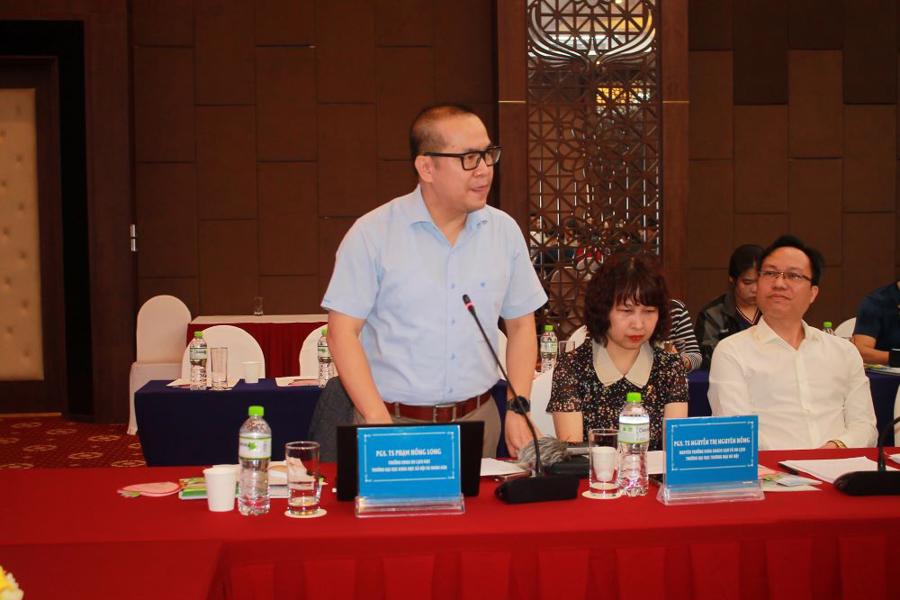
Mau Son mainly attracts seasonal tourists during the winter, especially on days with snow or heavy fog. Other times of the year see very few visitors.
Analyzing this issue, Assoc. Prof. Dr. Long said that very few enterprises invest in tourism in Loc Binh, leading to a lack of tourist streets on the mountain. Especially, the Sun Group has a project to invest in an eco-tourism complex and cable car on Mau Son Mountain with a total investment of over VND 7,300 billion, but after many years, this project has encountered many obstacles. This shows that the policies and capacity to create mechanisms for enterprises to invest in tourism in Lang Son province are still weak.
“With a temperate climate, we can exploit Mau Son in many aspects: admiring the landscape, adventure sports. Nowadays, developing eco-tourism to observe amphibians and reptiles, birds, and flora and fauna is becoming a trend. Not only the flora and fauna on Mau Son Mountain but also the ancient fossils in Na Duong coal mine will be a highlight to attract tourists,” suggested Assoc. Prof. Dr. Long.
According to Assoc. Prof. Dr. Long, Loc Binh needs to build a story for tourism to inspire tourists to visit. For example, in Cuc Phuong, they created a door with the words: “The enemy of wildlife and nature is behind this door”, which aroused curiosity in tourists. When this door is opened, there is a picture of a human, letting visitors understand why humans are the destroyers of nature. This creates awareness about eco-tourism.
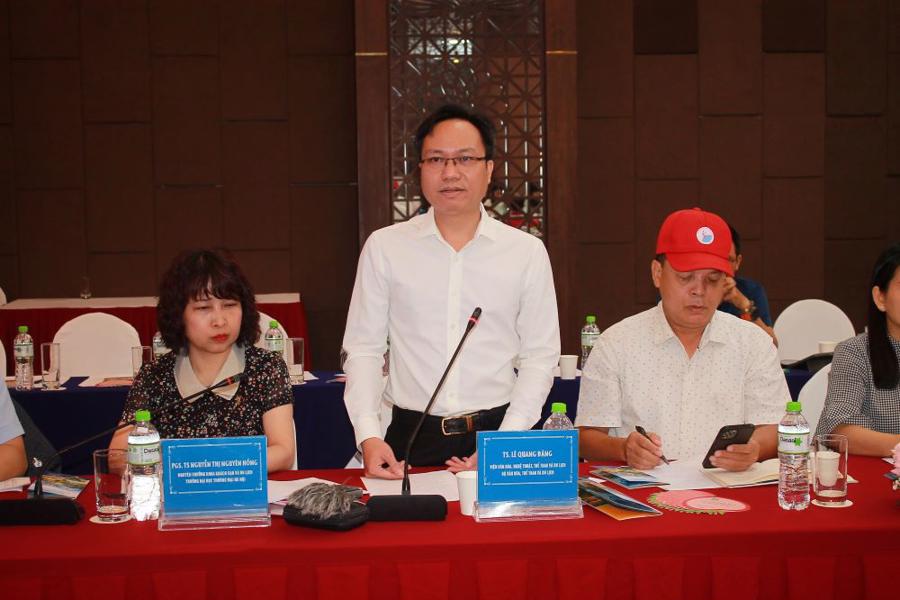
Dr. Le Quang Dang, from the Vietnam Tourism Development Research Institute, suggested that Mau Son is a symbol of Lang Son tourism and has been planned in the strategy and master plan of the Vietnamese tourism industry. Therefore, it is necessary to invest in developing it into a 4-5 star eco-resort destination.
In addition to Mau Son, Loc Binh has many other resources, with numerous high mountains suitable for adventure tourism. However, the roads to these places are very difficult. In many places, tourist cars cannot find parking spaces. When traveling in groups, people have to wait for a long time, but there are no shelters, and dining and accommodation services are also lacking.
Therefore, to develop tourism in Loc Binh, Dr. Dang recommended that the locality should invest in transportation and tourism infrastructure. In these places, local tour guides should be developed, not only to introduce the destination but also to ensure the safety of tourists when they climb mountains.
The “Billion-Dollar Petal”: Vietnam’s Rare Treasure that Fetching a Whopping $22 Million, Coveted by India
The flower boasts a stunning arrangement of 5 to 8 petals, each petal taking the shape of a delicate spindle, together forming a perfect star or wheel.
The Trump Organization’s $1.5 Billion Mega-Project: A ‘Gigantic’ Development Just 40km from Ho Guom, Hanoi
The Trump Organization’s proposed urban complex, eco-tourism resort, and golf course in Hung Yen has just been given the green light. This ambitious project promises to be a game-changer, offering a unique blend of luxury, sustainability, and world-class leisure facilities. With the Trump name synonymous with quality and opulence, this development is set to become a prestigious landmark and a sought-after destination for both local and international visitors.
Flamingo Majestic Island Resort: Riding the Wave of Investment in the Mountain Lake Retreat Archipelago.
Nestled amidst the serene Mountain Lake, Flamingo Majestic Island Resort is a pioneering 6-star retreat, striking a perfect balance between luxurious amenities and profound natural beauty. This exquisite sanctuary offers an unparalleled getaway experience, seamlessly blending opulence with the essence of nature’s tranquility.
Enhancing Vietnam – China Relations: Fostering Trade and Collaboration
The Vietnam-China International Trade and Tourism Fair (Lang Son 2024) serves as a pivotal “bridge” for businesses from both nations to forge stronger collaborations and bolster trade. This event also plays a significant role in enhancing the cooperative and friendly relations between Lang Son and Guangxi, and more broadly, between Vietnam and China, across various domains, including commerce, tourism, and cultural exchanges.


